In this Article
Toggle

The holiday season — a time of joy, gifts, and two men who seem to be competing for the title of Chief Gift-Giver. If you’ve heard of Sinterklaas, the Dutch holiday icon, you may have wondered if he’s the same as Santa Claus. This article unwraps the mystery by comparing Sinterklaas vs Santa.
The holiday season brings a host of traditions, but none are as iconic as the figures of Sinterklaas and Santa Claus. While they may seem like long-lost twins at first glance, these two are as different as eggnog and mulled wine. Let’s dive into the fascinating distinctions between Sinterklaas and Santa Claus, from their origins to their holiday traditions.
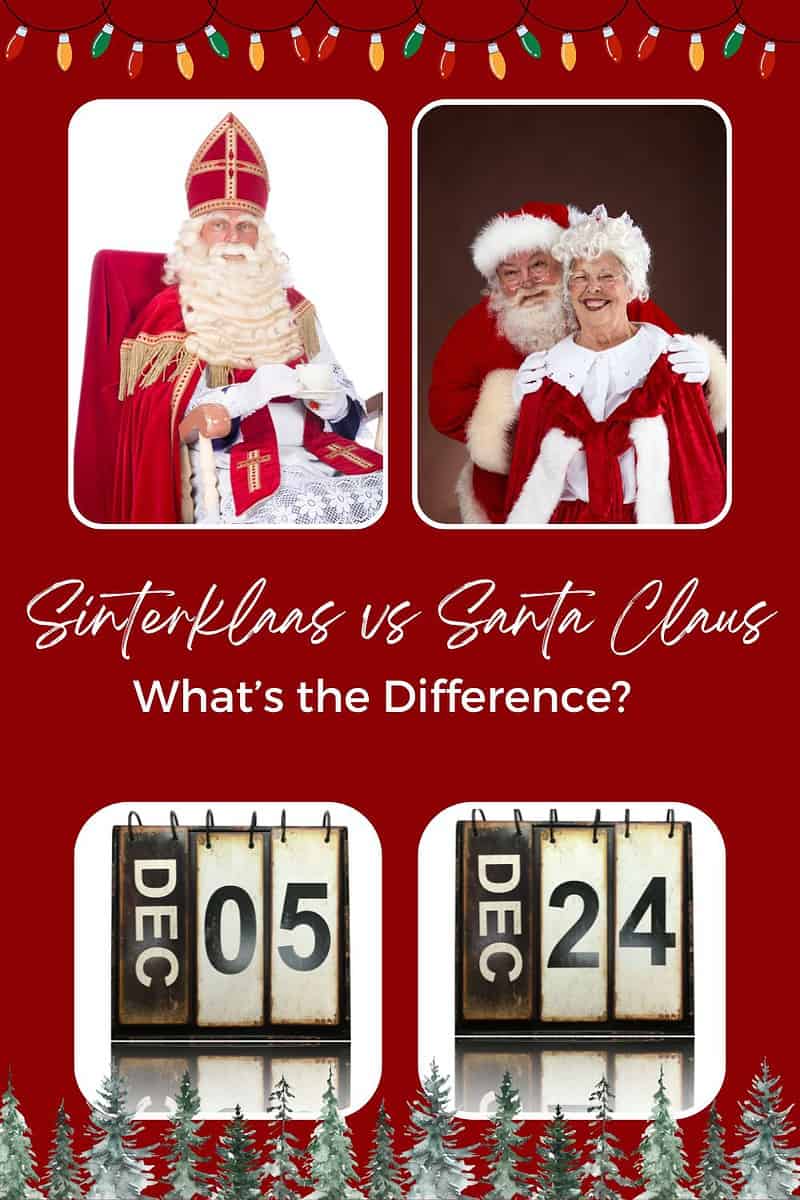
To help offset the costs of running EverydayWanderer.com, you’ll find affiliate links lightly sprinkled throughout the site. If you choose to make a purchase via one of these links, there’s no additional cost to you, but I’ll earn a teeny tiny commission. You can read all of the legal blah blah blah (as my little niece says) on the full disclosure page.
Is Santa Claus Based on Sinterklaas?
The American version of Santa Claus has evolved, incorporating elements from various traditions. Dutch settlers in America brought the tradition of Sinterklaas, which was merged with the British Father Christmas. This transformation was greatly influenced by two key literary works: Washington Irving’s portrayal of Santa Claus in Knickerbocker Tales and Clement Moore’s depiction of Santa Claus in “A Visit from St. Nicholas.”
In America, Santa Claus is also known by other names, like Kris Kringle. This nickname is derived from Christkindl, the traditional Christmas gift-bringer in Germany, Austria, and Switzerland.
Sinterklaas v Santa Claus: What's the Difference?
While they both bring joy and gifts to children, Sinterklaas and Santa Claus are legendary figures with distinct identities that set them apart in more ways than one. From their modes of transportation to their choice of helpers, each has a unique style that makes the holiday season all the more enjoyable.
Who are They?
For Dutch people, Sinterklaas is a cherished figure based on Saint Nicholas, the 4th-century Christian patron saint of children, sailors, and many others. Santa Claus, on the other hand, is a more secular figure that has evolved by drawing from various traditions, including the Dutch Sinterklaas.
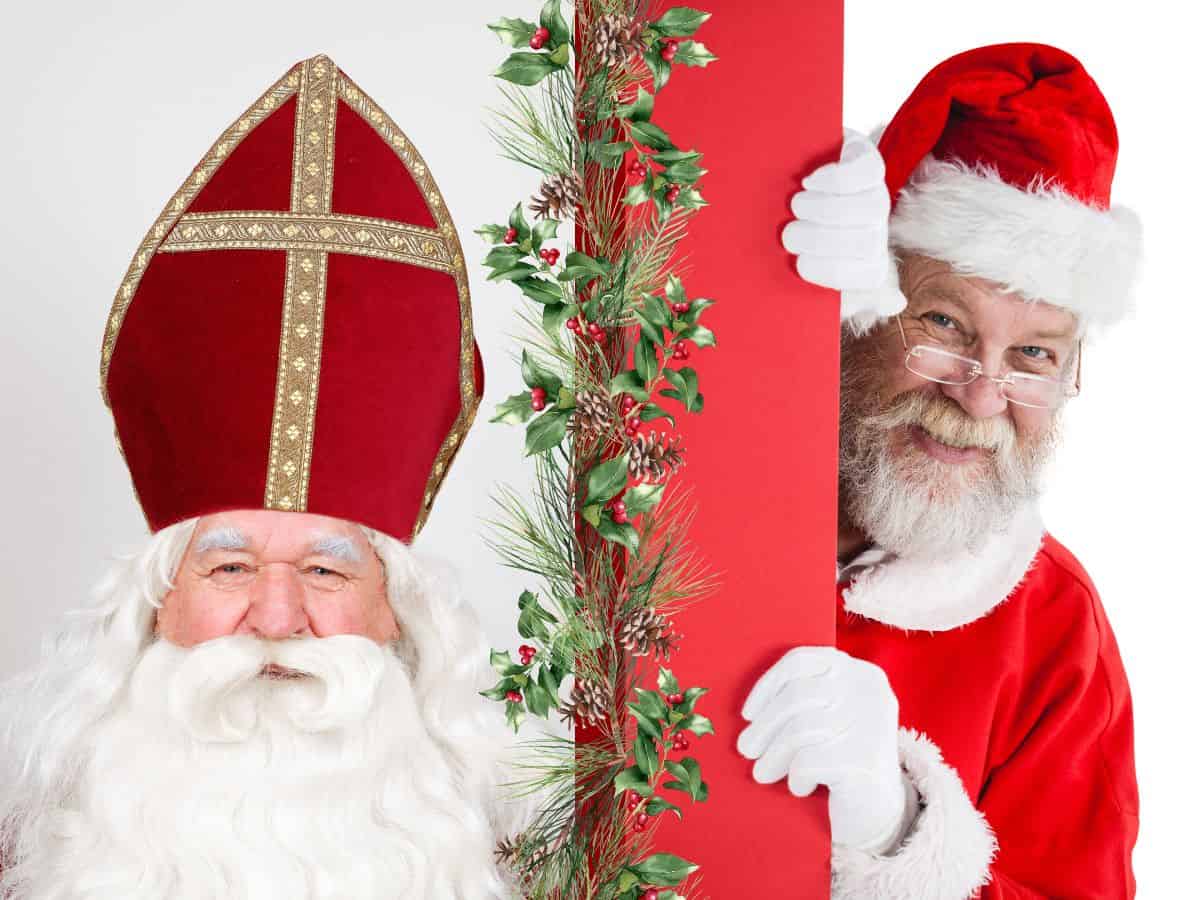
Their Personalities
Sinterklaas is often seen as a wise, elderly figure, embodying the qualities of a revered bishop. His demeanor is one of calm authority, and he’s often depicted as thoughtful and dignified.
Santa Claus, on the other hand, is jolly and exuberant, embodying the spirit of festive cheer. His hearty laugh and twinkling eyes make him approachable and beloved by children worldwide. Their different personalities not only reflect their distinct cultures but also the roles they play during the holiday season, from the solemnity of Sinterklaas’s religious roots to Santa’s role as the epitome of holiday merriment.

Appearance: Bishop’s Robe vs Red Suit
Sinterklaas dons a bishop’s robe, complete with a ruby ring and a ceremonial staff called a crosier, signifying his religious and authoritative stature. He maintains a slim figure, perhaps due to dining on a Mediterranean diet in Spain (more on that in a bit).
Never entirely shedding his holiday weight, probably due to Mrs. Claus’s talent in the kitchen and all of the cookies left out for him by American children, Santa Claus dresses for comfort. His two-piece red suit with white trim, accented by a wide black belt and sturdy boots, looks as comfy as any stretchy pants I’ve ever seen.
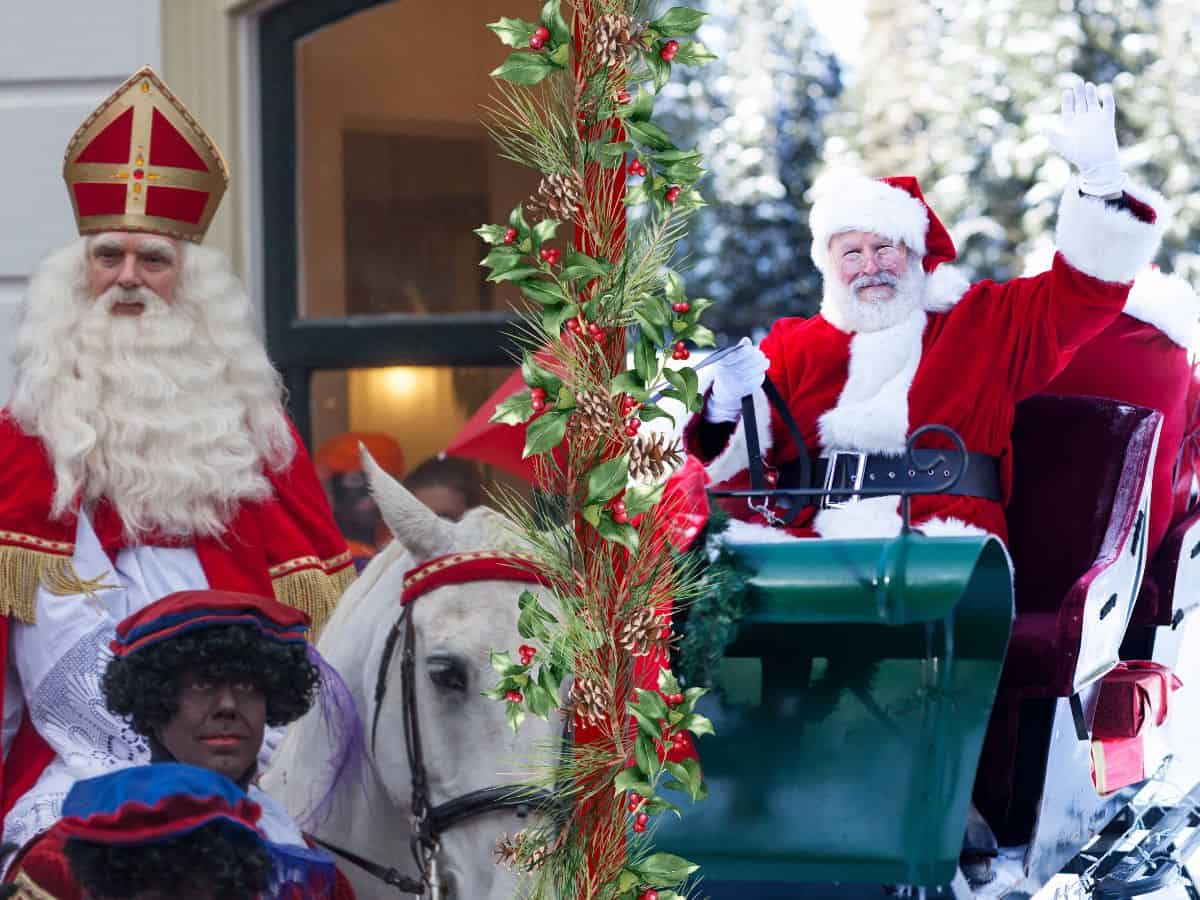
Getting Around: Horse vs Team of Reindeer
After arriving in the Netherlands on a steamboat from Spain, Sinterklaas rides a white horse named Ozosnel. Meanwhile, Santa Claus soars through the sky with a team of magical reindeer. Different strokes for different folks — or should I say, different hooves for different roofs?
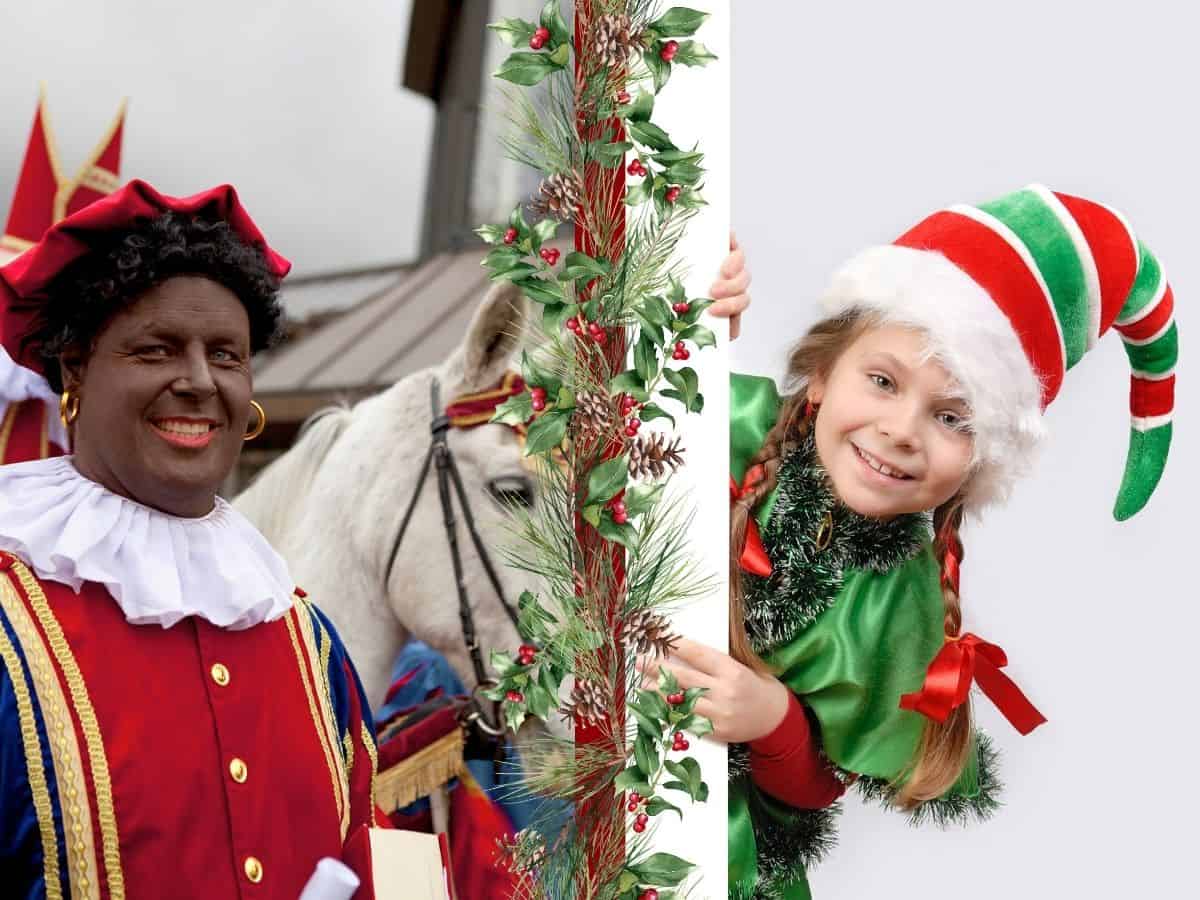
Their Helpers: Peters vs Elves
Sinterklaas is accompanied by his helpers, called Zwarte Pieten or Black Peters. They help distribute gifts and are traditionally portrayed in colorful Renaissance attire. However, the character of Zwarte Piet has sparked controversy in recent years due to its racial undertones, leading to changes in its portrayal in some Dutch communities.
On the flip side, Santa Claus employs a legion of elves, often depicted as cheerful figures dressed in green. These industrious elves work in Santa’s North Pole workshop, focusing on toy making and list checking to ensure a smooth Christmas Eve.
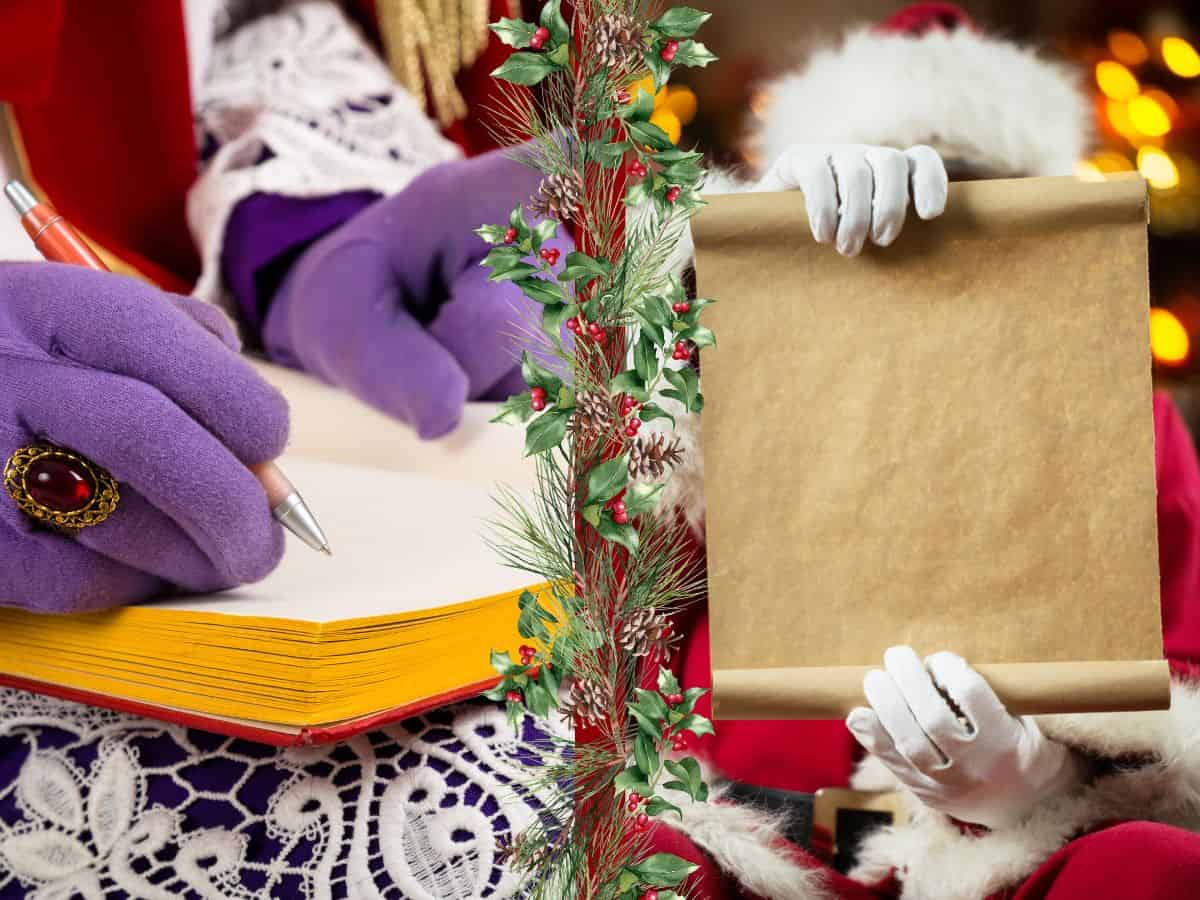
Monitoring Behavior: Book vs List
Sinterklaas notes children’s behavior in a book, a tradition that harkens back to his origins as a Christian bishop, where record-keeping was a significant part of ecclesiastical duties.
Santa Claus, on the other hand, has modernized with his famous “naughty or nice” list, often depicted in movies and stories as being managed with the latest technology. It’s paper vs digital in this age-old debate, reflecting the historical roots of Sinterklaas and the evolving folklore of Santa Claus.
Punishment for Naughty Children
When it comes to misbehaving children, Sinterklaas has a more “zero-tolerance” approach. His helpers, the Zwarte Pieten, carry a bag and a bundle of birch twigs for the sole purpose of taking naughty children away or giving them a symbolic spanking.
Santa Claus, on the other hand, opts for a less harsh lump of coal in the stocking instead of gifts, a practice that serves more as a warning than an actual punishment.

Where the Gifts Land: Shoes vs Stockings
In the Netherlands, children place a single shoe by the fireplace for Sinterklaas to fill in a long-standing Dutch tradition. Children often leave carrots or hay as a treat for Sinterklaas’s horse, Ozosnel.
In contrast, stockings hung by the chimney are Santa’s go-to for gift placement in the United States. These stockings are frequently personalized with names and are big enough to hold small gifts and candy.

The Big Night: December 5th vs December 24th
Sinterklaas makes his grand appearance on December 5th, known as Pakjesavond, when he delivers treats and gifts to well-behaved children. Santa Claus jumps from rooftop to rooftop delivering his goodies and gifts on Christmas Eve, December 24th.

Typical Treats: Chocolate Letters and Coins vs Candy Canes
Sinterklaas is known for gifting chocolate letters and chocolate coins. The letters often match the first initial of the child’s name, while the coins pay homage to Saint Nicholas’s history of generosity.
In American tradition, Santa Claus is synonymous with candy canes. These peppermint-flavored treats are a holiday staple, often enjoyed as decorations or sweet snacks.
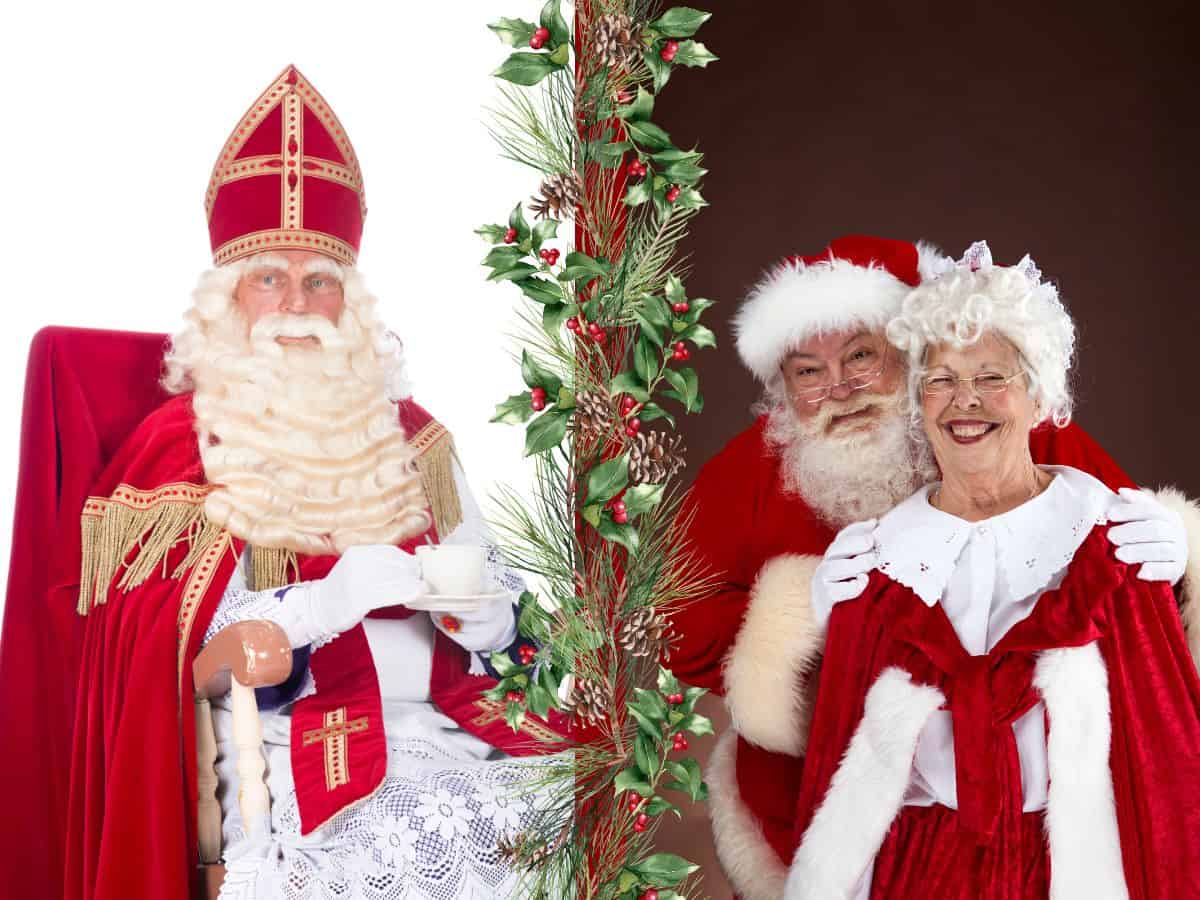
Home Life: Bachelor vs Family Man
While not much is known about Sinterklaas’s personal life, as a Christian bishop, it is expected that he took a vow of celibacy, making him a perennial bachelor.
In comparison, Santa Claus is married to Mrs. Claus, who is often depicted as his supportive partner, managing the North Pole household and sometimes even the workshop. This contrast in home life adds another layer to the distinct personalities and roles in the respective holiday celebrations.
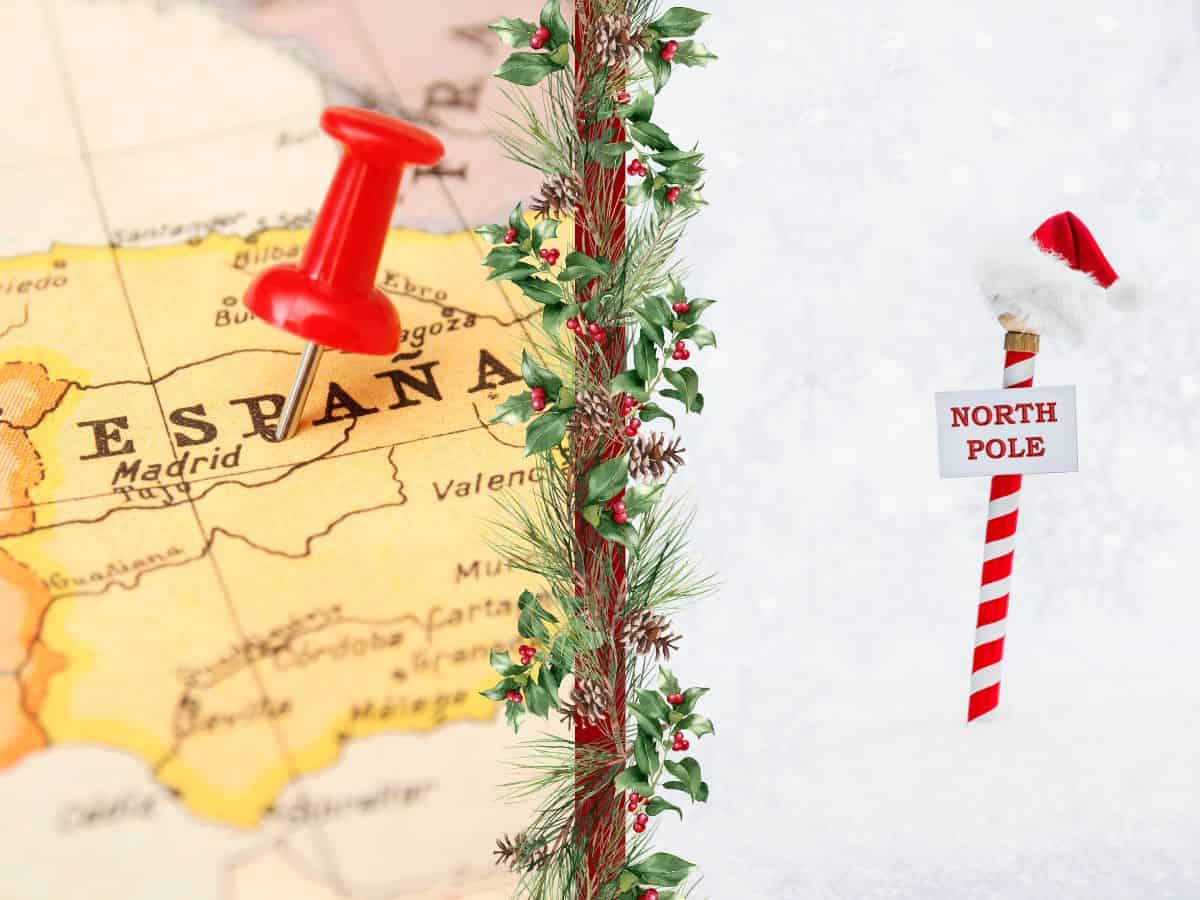
Where They Live: Spain vs North Pole
Sinterklaas resides in sunny Spain for most of the year, enjoying a climate that’s as warm as his demeanor. In stark contrast, Santa Claus calls the frigid North Pole his home, a place so cold it’s a wonder his jolly spirit isn’t frozen! These dramatically different habitats not only serve as their bases of operation but also add to the mystique and allure of these two iconic figures. Talk about polar opposites!
Unwrapping the Mystery: The Final Verdict
As we’ve seen, Sinterklaas and Santa Claus are two distinct figures, each with their own rich traditions and stories. While they share a common thread in bringing joy to children worldwide, their differences make them unique and cherished in their own right. So whether you’re sipping hot cocoa in the Netherlands or leaving out cookies in the U.S., there’s a rich tapestry of traditions to explore.
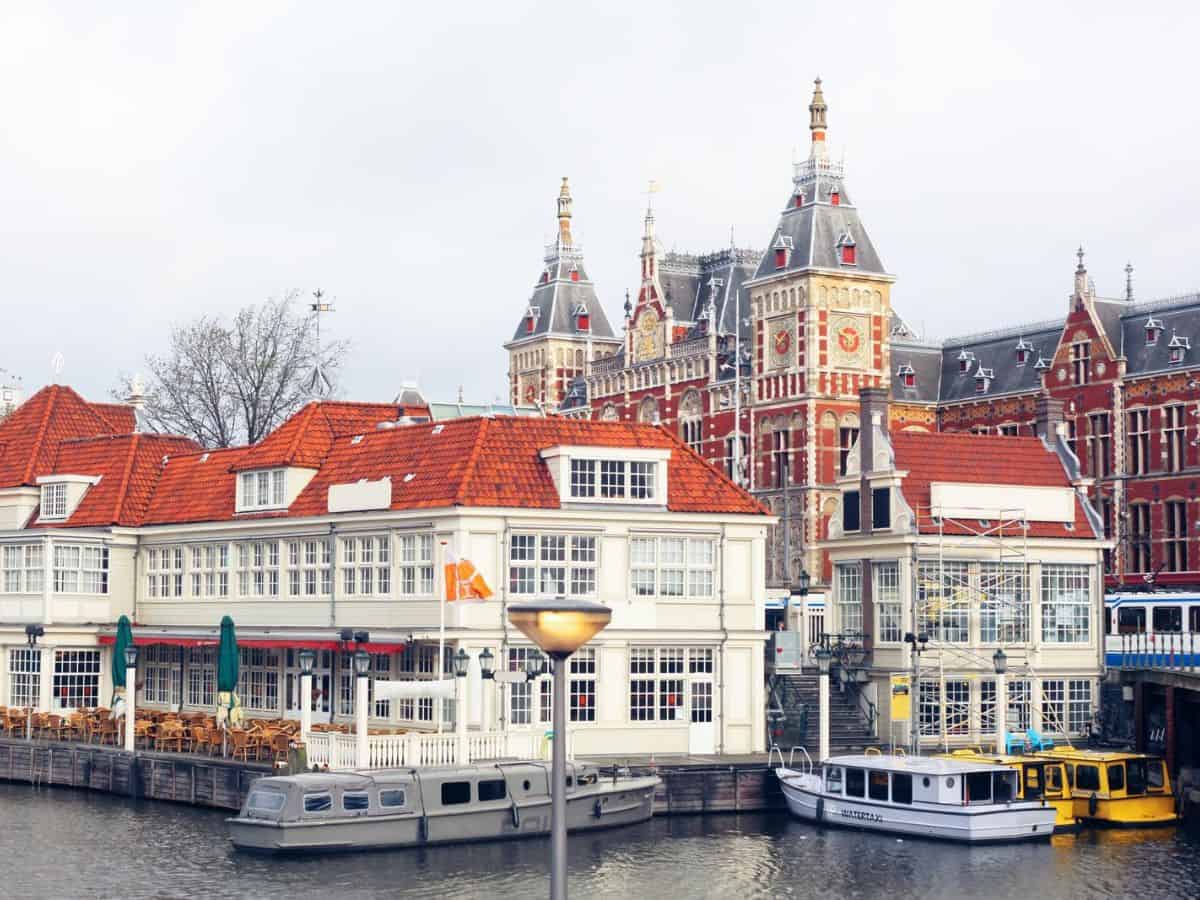
Looking for more information to plan your vacation to the Netherlands? Check out my additional recommendations to help you plan your trip to the Netherlands including what to see and do in the Netherlands, the best places to stay in the Netherlands, where to eat in the Netherlands, and more!
Ready to Go?
Use These Helpful Links to Book Your Trip!
- Find low fares with airfarewatchdog and Skyscanner
- Book your plane ticket with Expedia or Kayak
- Or take the scenic route on an epic road trip in a rental car or an RV from Outdoorsy
- From hotels to private homes, find the perfect accommodation with Hotels.com or Vrbo
- Travel in style with a suitcase, carry-on, backpack, or handbag from eBags
- Save on tickets to attractions, sightseeing tours, and more with CityPASS, Tiqets, and Viator
- Don’t leave home without travel insurance from AXA
- Discover the sights, history, and culture of your destination with an interactive scavenger hunt
- Need something else to plan your perfect trip? Visit my travel resources page for more trusted partners. Happy wandering!
Thank you for sharing!

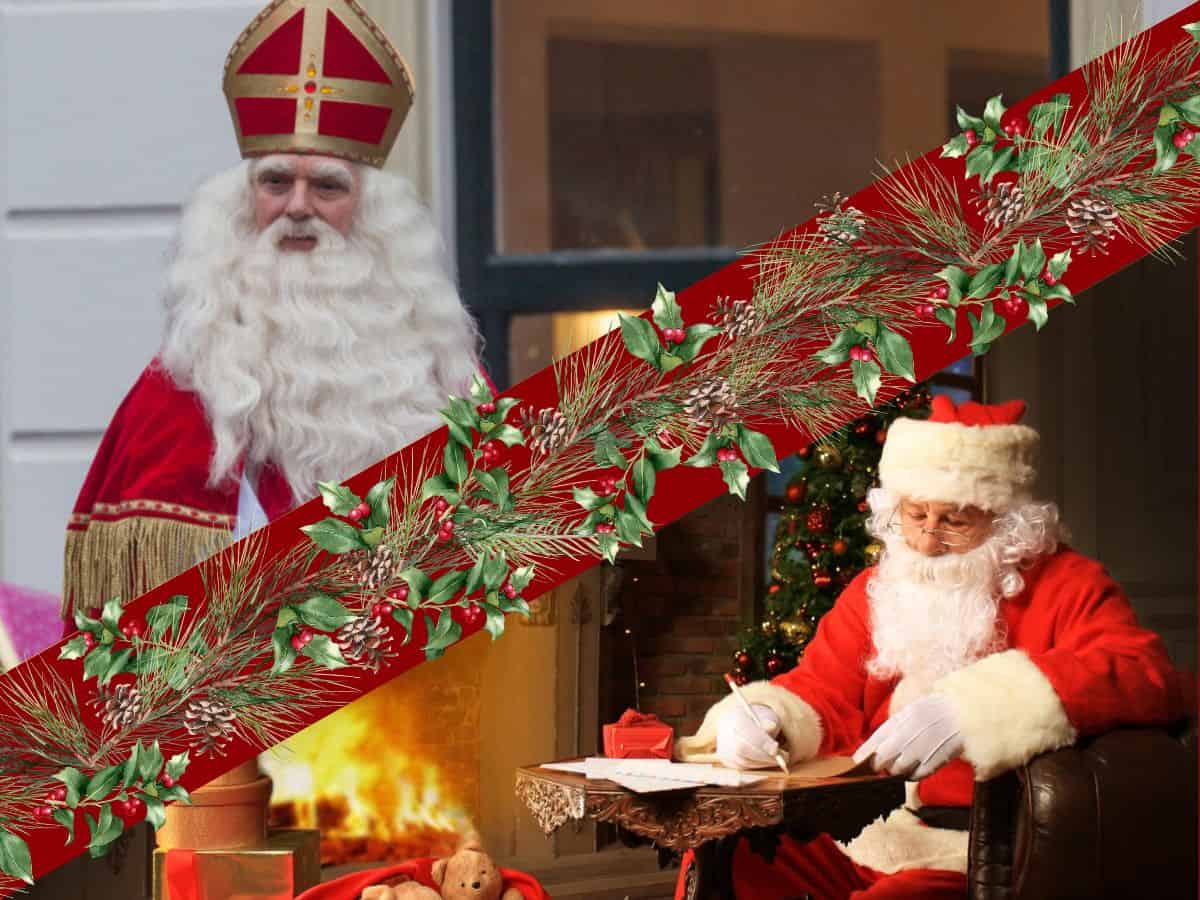

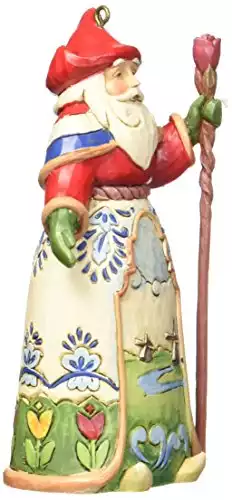
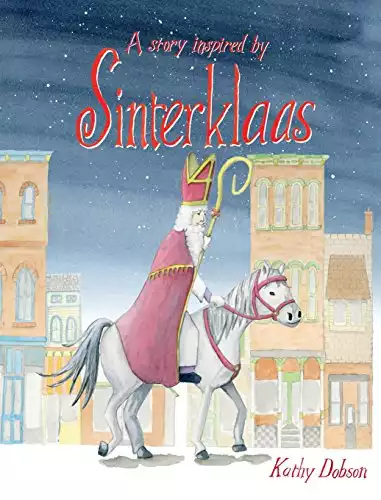
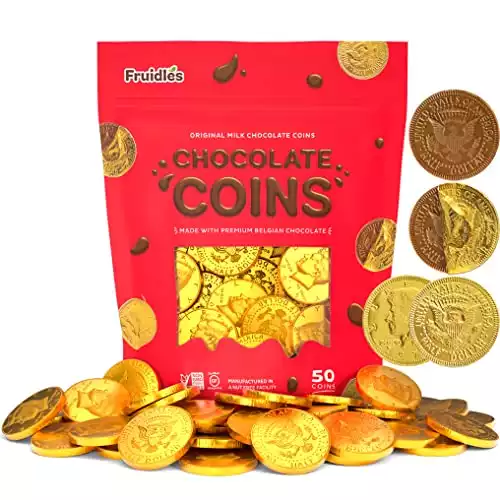

I am doing a school project about different christmas traditions and I used your website for information (don’t worry I am learning how to do credit and references so I put the link in)
I am glad we didn’t have sinterklass when I was little, I don’t like the idea of being hit with a stick if I am naughty.
I liked having Santa.
Thank you for helping me with my project!
Good luck with your school project! Your comment made my day! <3
This was such an interesting read about the origins and traditions of Sinterklaas and Santa Claus.I love learning about cultural adaptations of holiday figures.
I enjoyed this post so much! Thank you for sharing the history. I had no idea!
I loved this Santa Clause and Sinterklaas history lesson! So much great Christmas traditions!
Glad to hear this now I fully understand the differences between these two. Thanks for sharing this useful information I love it❤️️